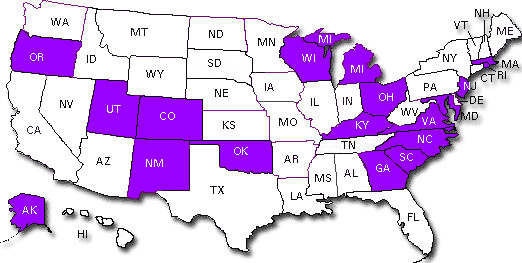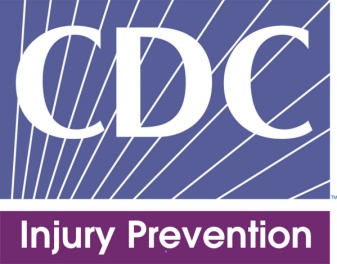Attachment 8: The National Violent Death Reporting Syste
Generic Clearance for the Collection of Qualitative Feedback on Agency Service Delivery
Attachment8_Public-Health-Department-Staff_National-Violent-Death-Reporting-System_2013.10.31
Testing of Sample Materials Developed Using the CDC Clear Communications Index
OMB: 0920-0956
Attachment 8
|
The National Violent Death Reporting System (NVDRS): A valuable tool for prevention
|
The National Violent Death Reporting System (NVDRS) is a powerful tool that can help state and local health departments develop evidence-based strategies for reducing violent deaths.
Violence is a public health problem that affects individuals, families, and communities throughout the United States. According to data from the Centers for Disease Control and Prevention, National Center for Injury Prevention and Control (CDC Injury Center):
More than 55,000 Americans died because of homicide or suicide in 2010 – that’s an average of more than 6 people dying a violent death every hour.
Violence-related deaths, assaults, and acts of self-harm cost the United States an estimated $84 billion in medical care and lost productivity every year.
The good news is that violence can be prevented – and accurate information about violence is the key to designing, implementing, and evaluating prevention efforts. The NVDRS provides this information to state and local health departments.
What is the National Violent Death Reporting System (NVDRS)?
NVDRS is a state-based surveillance system developed by the CDC Injury Center. NVDRS compiles facts about every violent death from multiple sources, including:
State and local agencies
Medical examiners
Coroners
Police
Crime labs
Death certificates
No other data system combines information like this to provide a complete picture of violent deaths. NVDRS is able to:
Link records on violent deaths that occurred at the same time – like multiple homicides or homicide-suicides – to help identify risk factors
Provide timely preliminary information on violent deaths (currently, official data is not available until 2 years after death)
Detail the circumstances which may contribute to a violent death, like job loss, physical and mental health problems, family and other stressors
How can NVDRS data be used to prevent homicides and suicides?
NVDRS data describes the “who, when, where, and how” of violent deaths – which can lead to a better understanding of the “why”.
Use NVDRS data to guide your prevention programs, policies, and practices. For example, the information can help you:
Advocate for resources for state and local prevention programs
Inform decision makers and program planners about the magnitude, trends, and characteristics of violent deaths
Identify risk and protective factors for violence
Assist groups in selecting and targeting violence prevention efforts
Evaluate the impact of prevention programs and strategies
Is NVDRS data available for my state?
R ight
now, 18 states participate in NVDRS: Alaska, Colorado, Georgia,
Kentucky, Maryland, Massachusetts, Michigan, New Jersey, New Mexico,
North Carolina, Ohio, Oklahoma, Oregon, Rhode Island, South Carolina,
Utah, Virginia, and Wisconsin.
ight
now, 18 states participate in NVDRS: Alaska, Colorado, Georgia,
Kentucky, Maryland, Massachusetts, Michigan, New Jersey, New Mexico,
North Carolina, Ohio, Oklahoma, Oregon, Rhode Island, South Carolina,
Utah, Virginia, and Wisconsin.
If NVDRS data isn’t available for my state, can I still use the information to guide prevention efforts?
Yes. NVDRS data can still be used to better understand general patterns in violent deaths and emerging multi-state trends. But keep in mind that NVDRS data isn’t nationally representative.
How can I access NVDRS data?
Visit http://www.cdc.gov/injury/wisqars/nvdrs.html. The CDC Injury Center distributes information from NVDRS at the state and national level in both summary and topic-specific reports. You can customize your search of the data.
NVDRS data in action
Here are just a few examples of how NVDRS data is being used to shed light on national and local efforts to prevent violent deaths.
Understanding suicide among soldiers
At the federal level, CDC’s Injury Center is collaborating with the Department of Defense (DOD) to link information from NVDRS with information from DOD data systems. Together, we’ve identified the following factors as common among soldiers who died from suicide:
Intimate partner problems
Military-related stress, particularly job stress
Suicidal ideation, a sad or depressed mood, or a recent crisis
Focusing efforts to prevent these forms of stress might reduce suicides among soldiers.
At the state level, a number of NVDRS states, including New Jersey, Colorado, and Kentucky, are also using data to investigate suicides in the military.
Identifying underserved, at-risk groups
NVDRS states can use the data to uncover patterns and make the best use of resources. For example, NVDRS data helped Oregon develop and implement suicide prevention programs for older adults.
The data showed that only a small percentage of older adults who committed suicide were receiving treatment for depression when they died – even though more than 1 out of 2 of them were reported to have a depressed mood.
In response to these findings, Oregon developed an Older Adult Suicide Prevention Plan designed to help primary care and mental health providers collaborate to identify and treat suicidal behavior in older adults.
Localizing efforts to prevent violence
States with NVDRS data can investigate whether violent death circumstances vary by county or zip code.
Virginia and North Carolina NVDRS have recently published reports analyzing violence by each county in their state.
New Jersey currently maps the locations of violent deaths to better understand trends and patterns in violence. For instance, geographic analyses revealed suicide rates in New Jersey were highest in rural areas.
Efforts like these help local communities better understand and respond to the problems of violence they face.
What’s next for the NVDRS program?
To further develop and strengthen the NVDRS program, we intend to:
Expand the NVDRS system to all 50 states. Right now, NVDRS data can’t be generalized to national trends because data from the current 18 states aren’t nationally representative. With additional funding, the NVDRS system could be expanded to cover more states and provide more data.
Ensure NVDRS data supports and translates into violence prevention activities by:
Increasing dissemination and use of NVDRS data at the national level.
Providing technical assistance to funded states to help them monitor and report their data.
Link NVDRS data with even more data sources, like child fatality review reports and adult protective services reports.
Improve the new web-based reporting platform to increase reporting efficiency, consistency, and security and decrease administrative costs.
| File Type | application/vnd.openxmlformats-officedocument.wordprocessingml.document |
| File Title | State Violence and Injury Prevention Programs - OPP OD Comments (10.11.12) |
| Author | grc7 |
| File Modified | 0000-00-00 |
| File Created | 2021-01-29 |
© 2025 OMB.report | Privacy Policy
